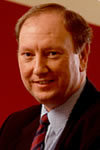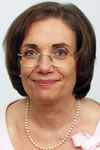The demands of industry for ever higher levels of fidelity in system design and its optimisation in-service are continually reflected in the capabilities expected of CAE simulation and analysis environments. Hence it is becoming important, not just to make existing simulation capabilities more accessible by engineers and technicians with a limited simulation knowledge base, but to provide capabilities to enable the multi-physics interaction that occur amongst phenomena in reality – fluids with structures, coupled with thermo-chemical fields, electro-magnetic forces and ultimately acoustics as well. Identifying the way in which interactions might be represented in practical terms are genuine challenges:
- the level of physical coupling required (one or two way, weak or strong),
- how this is reflected mathematically in interface conditions (at the boundary, as a body force or through model parameters), and
- how this might be facilitated between the distinct nature of algorithms conventionally used for each phenomena.
The CAE analysis community has focused upon coupling amongst existing tools by enabling the exchange of simulation data within a coherent user environment. MpCCI has played a significant role here to enable such code interactions, whilst others have built code specific interfaces to cope with all the demands of close coupling. Other scientific communities have begun to use emerging software tools, which whilst less mature and rich in individual phenomena capabilities, nevertheless, focus upon facilitating the interactions amongst phenomena. So a variety of solutions are emerging which enable effective multi-physics simulation and analysis.
There is a paradox here – the user community demand accessibility to multi-physics capability combined with usability. The latter inevitably reduces the user’s ability configure the physics in building a model. Whilst many are grateful that they have such a capability already programmed in, more advanced users are frustrated because of their needs to access the ‘code’ internals to push the capability envelope of such technologies. This is because each new problem cannot simply be switched on – it must be approached in steps, considering each phenomenon separately and then introducing the coupling at appropriate levels. Hence, the strategy for multi-physics simulation is essentially more challenging than that for conventional phenomena specific CAE analysis.
Multi-physics simulation is deceptively challenging, and no more so than in the analysis of fluid structure interaction (FSI). The analysis of FSI seems straightforward enough – the fluid loads the structure surface and then the subsequent deformation of the structure influences the geometrical shape of the surrounding flow domain. If the interaction is steady, the problem is much simpler – it is the natural transient behavior that is such a challenge to capture.
What makes this so tough to do well is a combination of challenges:
a) the problem of effecting data exchanges between solvers for fluid and dynamic structures that are entirely disparate (including the resulting software structures)
b) capturing the time accurate behavior of each of the fluid and structural components
c) the capture of the additional physics that arises as a matter of the interactions (e.g. spatial or geometrical conservation), and
d) how the boundary conditions change as a consequence of distinctive flow regimes
to name but four.
The objective of this contribution is to address the challenges and progress being made to enable the practical application of multi-physics simulation technologies in leading-edge industries, with a special focus on the challenges of fluid-structure-interaction.
Agenda
Welcome & Introduction - Matthew Ladzinski, NAFEMS North American Representative
Challenges in the Computational Modeling of Multi-Physics Process and Systems - Dr. Mark Cross
Special Focus on Fluid Structure Interaction - Dr. Avril Slone
Q & A Session
Closing
Back to All Webinars

 Born in London, Mark Cross graduated with a BSc (Hons) in Mathematics in 1969 followed by a PhD in Mathematical Modelling of Laser Physics Phenomena in 1972 both from Cardiff University, eventually followed by a DSc in Computational Modelling in 1990 from the University of Greenwich. After a short period teaching at South Bank University in London, he joined British Steel’s R&D organisation to lead the development of a mathematical modelling group. His time here was formative in that he was involved in the computational modelling of a variety of complex processes, the development of a range of numerical techniques and also numerical software. After 3 years at Sunderland University, a year in the US as a visiting professor at the Universities of Minnesota and California Berkeley, and a further year at the CFD software company CHAM, he joined the University of Greenwich in 1982.
Born in London, Mark Cross graduated with a BSc (Hons) in Mathematics in 1969 followed by a PhD in Mathematical Modelling of Laser Physics Phenomena in 1972 both from Cardiff University, eventually followed by a DSc in Computational Modelling in 1990 from the University of Greenwich. After a short period teaching at South Bank University in London, he joined British Steel’s R&D organisation to lead the development of a mathematical modelling group. His time here was formative in that he was involved in the computational modelling of a variety of complex processes, the development of a range of numerical techniques and also numerical software. After 3 years at Sunderland University, a year in the US as a visiting professor at the Universities of Minnesota and California Berkeley, and a further year at the CFD software company CHAM, he joined the University of Greenwich in 1982. Avril Slone is a Senior Researcher within the Centre for Civil and Computational Engineering within the School of Engineering at the University of Wales Swansea, UK. Dr Slone has had two careers. Originally in the 1970’s she trained and practised as a professional statistician, working primarily within the electricity supply industry. After a family break she pursued a Mathematics Degree through the Open University in the UK.
Avril Slone is a Senior Researcher within the Centre for Civil and Computational Engineering within the School of Engineering at the University of Wales Swansea, UK. Dr Slone has had two careers. Originally in the 1970’s she trained and practised as a professional statistician, working primarily within the electricity supply industry. After a family break she pursued a Mathematics Degree through the Open University in the UK. 
